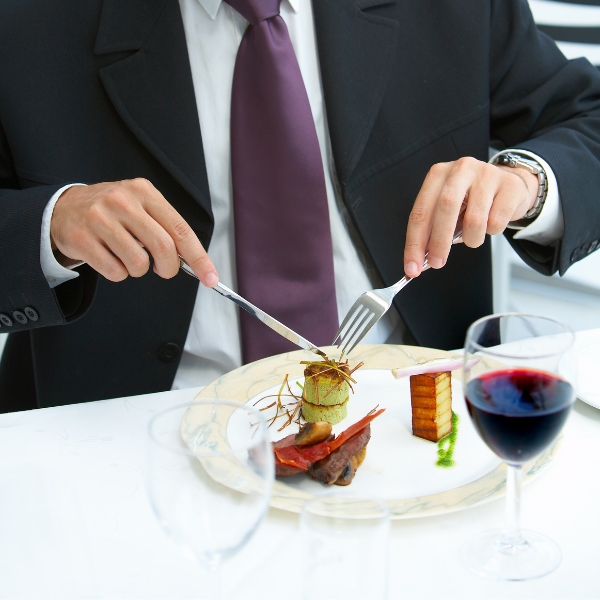For chefs, caterers, and foodservice operators, understanding the nuances of sugar is essential, not just for flavor, but for wellness-conscious menu development. This guide explores the most common types of sugar used in kitchens today and weighs in on their functional profiles, health reputations, and culinary applications.
From white sugar to coconut sugar, each sweetener offers unique characteristics. While the calorie impact is largely the same across the board, this list breaks down what sets certain sugars apart, especially in presentation, use cases, and customer perception. If you’ve ever wondered are natural sugars are better or how to incorporate the healthiest sugar types into your offerings, this list will help you make informed choices that align with upscale dining expectations.
Understanding Sugar: Natural Vs. Refined Vs. Artificial
Before diving into individual sugar types, it’s important to clarify a few core distinctions.
Natural Sugars
Refined Sugars
Artificial Sweeteners
These lab-derived options are used for calorie-free sweetness but are controversial in taste and long-term health effects. Options include aspartame, sucralose, and saccharin.
Regardless of the source, excessive added sugar intake—natural or not—is linked to increased health risks. That’s why understanding form, function, and customer perception is critical in fine dining and catering environments.
1. White Sugar

The Standard Bearer of Sweetness
-
Source: Refined from sugarcane or sugar beets
-
Flavor Profile: Neutral, clean sweetness
-
Application: Ideal for baking, sauces, and cocktails
-
Price Range: Low cost; widely accessible
-
Unique Attributes: Highly predictable performance in recipes
Despite its ubiquity, white sugar is often seen as the least health-forward choice. That perception is important to note for operations serving health-conscious clients. When used, consider pairing it with high-integrity ingredients and storage jars to elevate presentation.
2. Brown Sugar

Refined Sweetness with a Hint of Molasses
-
Source: White sugar mixed with molasses
-
Flavor Profile: Deep, caramel notes
-
Application: Works well in glazes, marinades, and baked goods
-
Price Range: Slightly higher than white sugar
-
Unique Attributes: Adds moisture and depth of flavor
While not significantly healthier, brown sugar adds complexity that resonates with rustic or comfort-forward dishes. It’s especially valuable in holiday and seasonal menu planning.
3. Honey

Nature’s Original Sweetener
-
Source: Bees extracting nectar from flowers
-
Flavor Profile: Floral, rich, varies by region
-
Application: Glazes, dressings, and beverage programs
-
Price Range: Mid-to-premium tier
-
Unique Attributes: Contains trace antioxidants and enzymes
Honey’s artisanal reputation makes it a valuable component in upscale dishes. Its luxurious texture and heritage appeal can help elevate breakfast boards and dessert presentations.
Pair with our handcrafted wooden serving trays for a polished display.
4. Maple Syrup

A Tree-Derived Touch of Elegance
-
Source: Sap from sugar maple trees
-
Flavor Profile: Earthy, buttery, mildly smoky
-
Application: Brunch dishes, glazes, or craft cocktails
-
Price Range: High, especially Grade A organic types
-
Unique Attributes: Minimal processing, contains small amounts of zinc and manganese
For menus aiming to evoke warmth or nostalgia, maple syrup offers both culinary sophistication and guest-friendly storytelling. Use sparingly—its flavor is potent, and its cost can add up.
5. Coconut Sugar

The Trendy Sweetener with Low-Glycemic Appeal
-
Source: Sap from coconut palm flowers
-
Flavor Profile: Mild caramel with earthy undertones
-
Application: Vegan desserts, baked goods, or health-focused fare
-
Price Range: Premium
-
Unique Attributes: Lower glycemic index than white sugar
Often featured in wellness cuisine, coconut sugar is favored by customers seeking a perceived “healthier” option. Though the nutritional benefits are modest, its trend-forward image can enhance the appeal of specialty items.
6. Artificial Sweeteners (e.g., Aspartame, Sucralose)

The Calorie-Free Conundrum
-
Source: Synthetic chemical compounds
-
Flavor Profile: High-intensity sweetness, sometimes metallic
-
Application: Diet beverages, sugar-free desserts
-
Price Range: Low per serving
-
Unique Attributes: Zero-calorie appeal for specific dietary needs
While not ideal for high-end culinary flavor profiles, artificial sweeteners serve a purpose in diabetic-friendly or low-calorie options. However, they may not reduce long-term cravings and can polarize customers in premium dining spaces.
How to Use Sugars Strategically In Foodservice
Pairing Tips for Sweeteners
-
White Sugar: Pair with acidic ingredients (lemon, vinegar) to balance flavor
-
Maple Syrup: Excellent with smoked meats and root vegetables
-
Honey: Complements cheeses, particularly blue or goat varieties
-
Coconut Sugar: Works best in chocolate-based recipes or spice-forward dishes
Serving Tips
- Use elegant containers like small glass jars for syrup or honey at the table
-
Incorporate sugars into branded signature sauces for customer retention
-
Avoid overusing artificial sweeteners in tasting menus or chef-led presentations
Essential Tools for Presentation
- Precision portioners for consistency
-
Non-drip honey dippers for visual cleanliness
-
Premium carafes for tableside maple syrup service
Are Natural Sugars Better For Professional Kitchens?
From a nutritional standpoint, are natural sugars better? The answer is nuanced. While honey, maple syrup, and coconut sugar have minimal trace minerals, they don’t offer a significant health advantage over white sugar. The real differentiator is customer perception, taste profile, and how you integrate sweetness into your menu.
For chefs, caterers, and foodservice professionals, choosing among the healthiest sugar types isn’t just about calories—it’s about function, form, and storytelling. When sugar is used sparingly but thoughtfully, it enhances both the dining experience and the credibility of your culinary brand.






